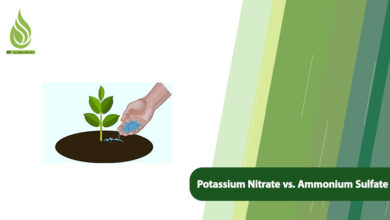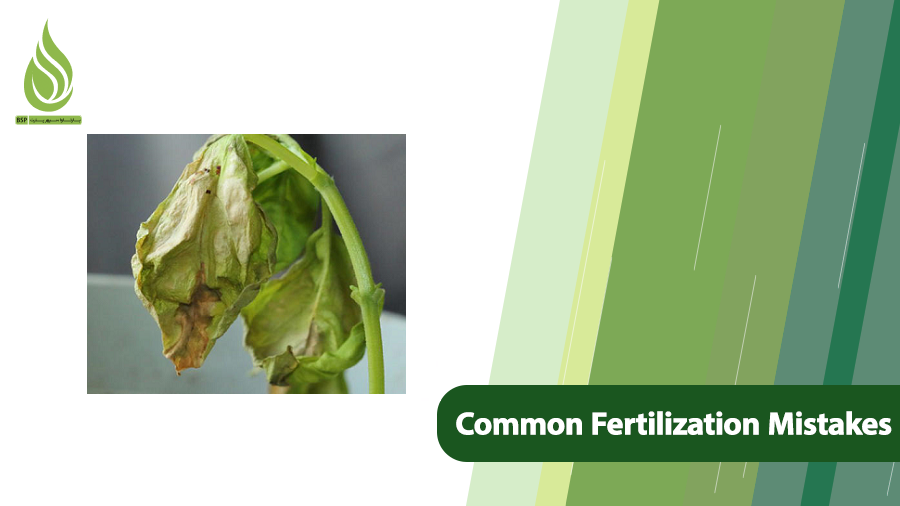
Common Fertilization Mistakes That Reduce Plant Performance
Proper fertilization is one of the most important factors in boosting agricultural productivity. Yet many farmers and gardeners, unaware of the correct methods, make mistakes that not only fail to increase yields but actually damage their plants. In this article, we’ll take a look at the most common fertilization mistakes so that, by avoiding them, you can get the best possible results from your land.
Why Correct Fertilization Is Essential
Fertilization is a key factor in the success or failure of any farming operation. Plants require 16 essential nutrients for growth and development, most of which they absorb from the soil. However, soil alone often can’t supply all of these nutrients, so fertilization becomes necessary. Some nutrients are needed in larger amounts than others, but even the smallest required elements are vital for healthy plant growth.
Proper fertilization matters for several reasons:
- Supplying essential nutrients: Plants need nutrients like nitrogen, phosphorus, and potassium to grow. Correct fertilization makes these nutrients available to the plants.
- Increasing yield: Timely and appropriate fertilization can significantly boost crop yields and improve fruit and vegetable quality.
- Improving soil health: Using organic and mineral fertilizers responsibly can enhance soil structure, retain moisture, and preserve nutrients.
- Resisting pests and diseases: Healthy, vigorous plants are better able to withstand pests and diseases.
- Promoting sustainable agriculture: Proper fertilization supports higher efficiency and optimal resource use, ultimately leading to more sustainable farming.
Although fertilization may seem simple, it’s actually a sensitive process. Even experienced, long-time farmers sometimes make mistakes in fertilization. You need to be aware of these errors and avoid them in your own operations.
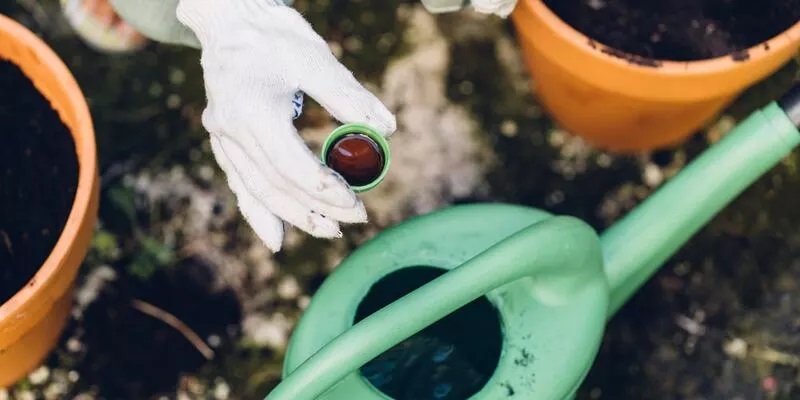
Correct fertilization encourages vegetative growth, increases flower and fruit production, improves crop quality, and strengthens plants against pests and diseases.
What Are the Most Common and Important Fertilization Mistakes?
Mistake #1: Incorrectly Assessing a Plant’s Nutritional Needs
One of the most frequent fertilization errors is failing to accurately determine what nutrients a plant requires. A plant’s needs depend on soil conditions, species, age, climate, and growth stage.
To assess your plant’s nutritional requirements, you can do these:
- Soil testing: A soil test reveals which nutrients are already present and at what levels, allowing you to choose the right fertilizers.
- Observing visual symptoms: Deficiencies of specific nutrients manifest as characteristic symptoms on the plant. By recognizing these signs, you can identify which nutrient is lacking and apply the appropriate fertilizer. This method, however, demands considerable experience, since many deficiency symptoms can look very similar.
- Consulting agricultural experts: Agronomists and extension specialists can use their knowledge and experience to help you diagnose a plant’s nutrient needs.
Note: Plant species themselves influence nutrient requirements. For example, tuberous crops like potatoes need more potassium, while grains have a higher demand for nitrogen.
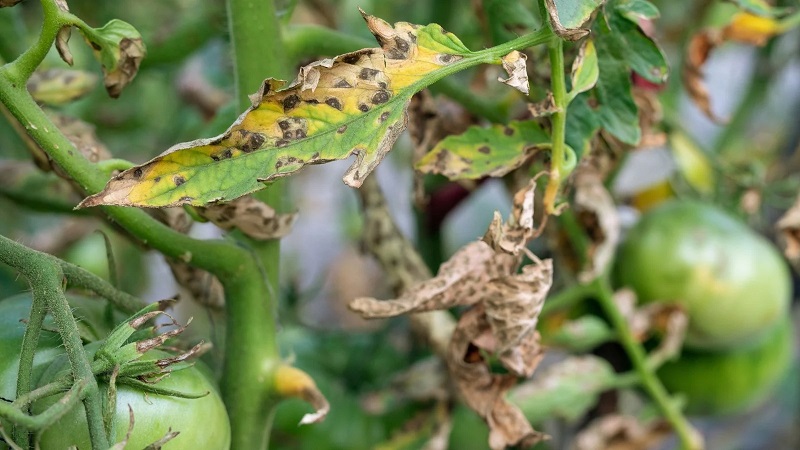
One of the biggest mistakes in fertilization is fertilizing without a precise understanding of the soil’s and plant’s needs. Without a soil test, you can’t know what type of fertilizer the land requires or in what amount. This leads to wasted resources and environmental damage.
Mistake #2: Sticking to a Fixed Fertilization Routine
Some farmers follow the exact same fertilization schedule every year; for example, applying a set amount of nitrogen each season. This approach is fundamentally flawed. Just because one formula worked once doesn’t mean it will work every time. Your fertilization plan should be based on the soil’s changing needs. To do this, perform a soil test each year before you start fertilizing and at the beginning of the growing season. Then, tailor your fertilization program to the nutrient levels revealed by that test.
Mistake #3: Using Low-Quality or Expired Fertilizer
For fertilizer to benefit your crops, it must be of good quality. Unfortunately, the market is full of counterfeit and substandard products. These not only fail to increase yields but can actually harm your plants. Always purchase fertilizer from reputable, well-known brands. When buying, check the packaging, production date, and expiration date. To keep fertilizer effective, store it in sealed packaging in a cool, dry place.
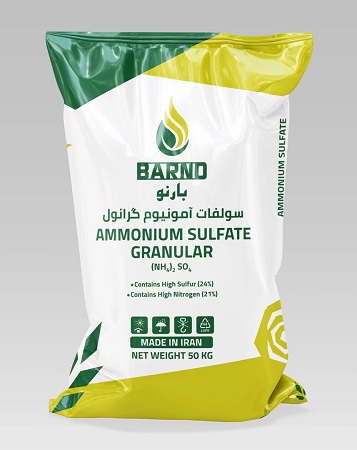
Mistake #4: Overfertilizing or Underfertilizing
Both overfertilizing and underfertilizing can harm your plants. Overfertilizing leads to nutrient toxicity, leaf and root burn, reduced yield, and decreased activity of beneficial soil microorganisms. For example, many farmers believe that the more nitrogen fertilizer they apply, the faster their plants will grow. But excessive nitrogen causes excessive vegetative growth that inhibits fruit and crop formation. It also gradually acidifies the soil. Although nitrogen fertilizer is critically important in agriculture, its improper or excessive use can hurt a farmer’s bottom line. If you notice burn symptoms (yellowing leaves, stunted growth), apply heavy irrigation to wash away the excess fertilizer.
Conversely, some farmers underfertilize out of fear of overdoing it. Underfertilizing causes nutrient deficiencies, weak plants, slow growth, poor-quality fruit, and overall yield reduction. To determine the proper amount of fertilizer, consider each plant’s nutritional requirements, the type of fertilizer, and the soil conditions. For example, leafy vegetables require more nitrogen—which must be factored into your fertilization plan.
Mistake #5: Ignoring Soil Conditions (One of the Most Common Fertilization Errors)
Soil is the primary medium for plant growth, and its properties greatly affect nutrient uptake. Acidic or alkaline soils, saline or sodic soils, and compacted soils all reduce a plant’s ability to absorb nutrients. To improve soil conditions, you should assess and correct the following:
- Adjusting soil pH: When soil pH is unbalanced, nutrient uptake is disrupted. Correct pH by applying lime or sulfur. Use sulfate-based fertilizers like crystalline ammonium sulfate to amend alkaline soils, and lime-containing fertilizers for acidic soils.
- Reducing soil salinity: Proper irrigation and drainage practices can help leach salts and lower soil salinity.
- Improving soil structure: Incorporate organic matter (such as manure or compost) to enhance soil structure.
Mistake #6: Fertilizing at the Wrong Time
To maximize fertilizer effectiveness, you must apply it at the right time. Fertilizing during cold weather or on the hottest days of the year yields no benefit. Applying fertilizer at inappropriate times leads to rapid nutrient evaporation (especially nitrogen fertilizers), poor root uptake, plant stress, and reduced growth.
The best time to fertilize is during the plant’s growing season (spring and summer). For fruit trees, fall fertilization is recommended to strengthen roots before winter dormancy. The ideal times of day are early morning or late afternoon, when temperatures are cooler and evaporation is minimized.
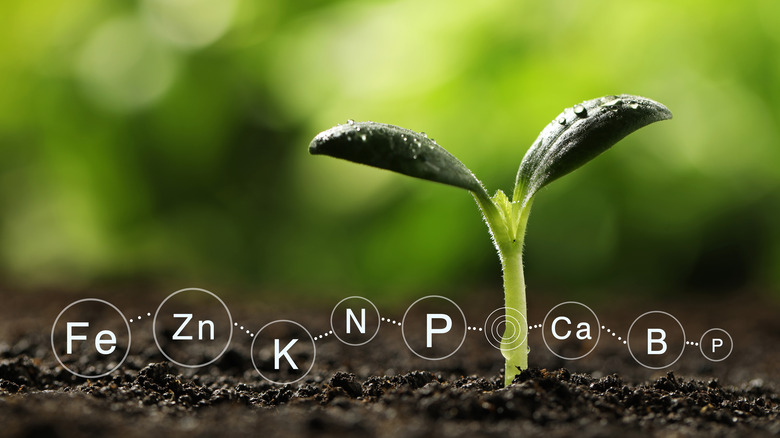
Incorrect timing of fertilizer application is one of the factors that reduces its effectiveness. For example, using phosphate fertilizers during the vegetative stage instead of the reproductive stage, or applying nitrogen fertilizer during plant dormancy, not only provides no benefit but may also harm the plant.
Mistake #7: Incorrectly Mixing Fertilizers Together (One of the Subtlest Fertilization Errors)
Some fertilizers react with each other and neutralize each other’s nutrients. For example, mixing calcium-containing fertilizers with phosphorus fertilizers can cause precipitation and reduce nutrient availability. Improper mixing can lead to high costs and low efficiency. You must understand fertilizer compatibility rules to avoid combining fertilizers that are not compatible.
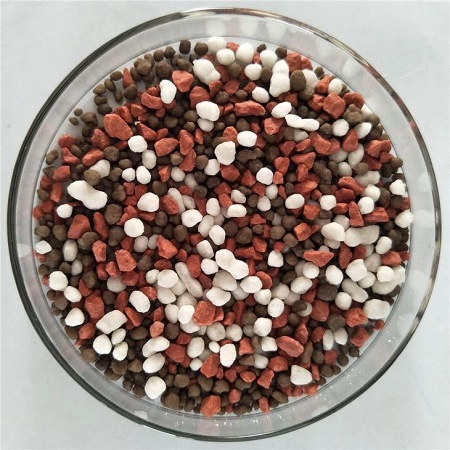
Mixing calcium-containing fertilizers with phosphorus fertilizers can cause precipitation and reduced nutrient uptake.
Important Tips for Proper Fertilization of Plants and Trees
- When using NPK fertilizers, pay attention to the proportion of each active ingredient. For example, if your plants are in the flowering and fruiting stage, choose an NPK fertilizer with high phosphorus, high potassium, and low nitrogen. If they are in the vegetative growth stage, an NPK with low potassium and high nitrogen is more appropriate.
- Always perform a soil test before starting fertilization. Select the appropriate fertilizer based on the soil test results and the plant’s nutritional needs.
- To achieve maximum yield, fertilization alone isn’t enough; the timing, type, amount, and method of application must all be precise and well-informed.
- After fertilizing, provide adequate irrigation.
- Consult agricultural experts if needed.
- By avoiding fertilization mistakes and implementing a scientific, soil-test–based nutrition program, you can achieve higher yields and better-quality crops.
